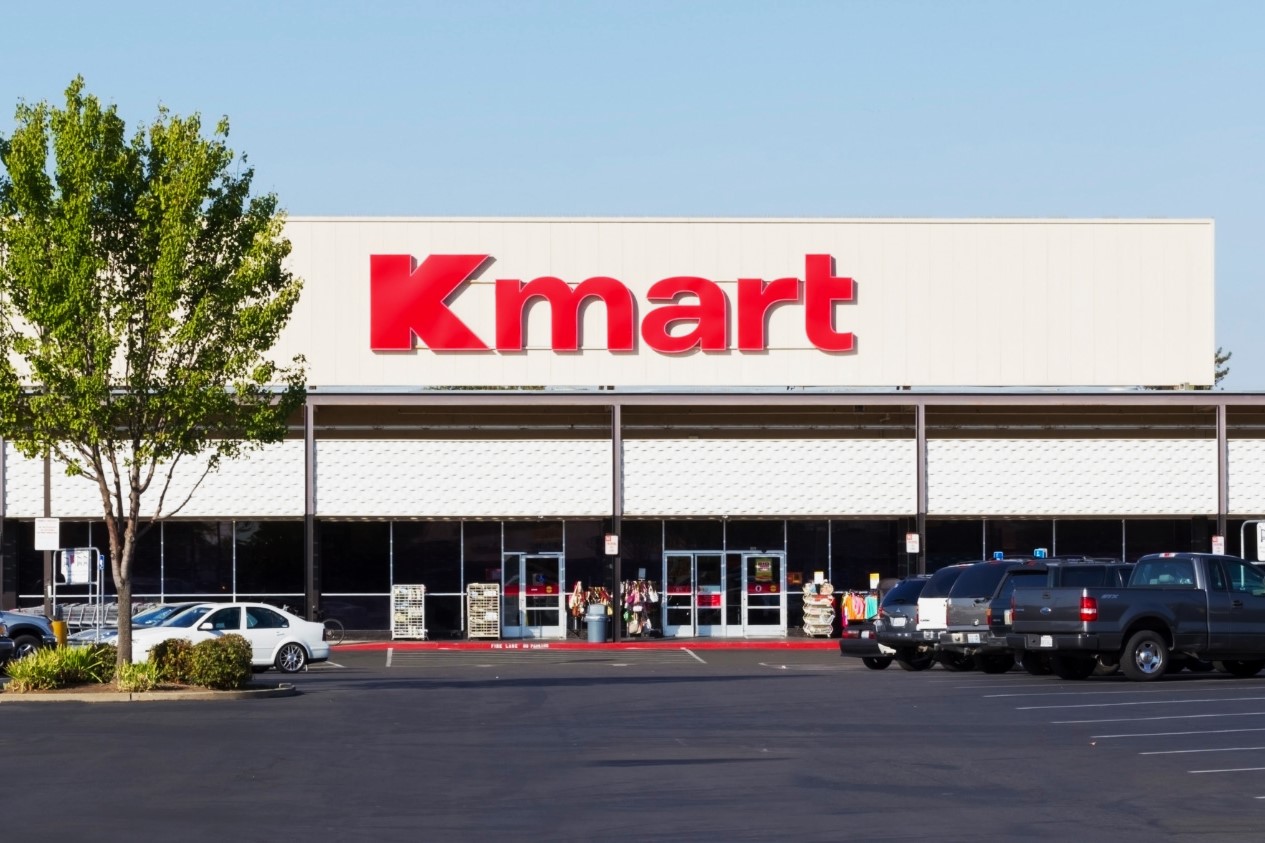
What happened to Kmart? Once a retail giant, Kmart's story is a rollercoaster of highs and lows. Founded in 1899 by Sebastian Spering Kresge, it began as a humble five-and-dime store. By the 1960s, Kmart had transformed into a discount retail powerhouse, opening its first store in Garden City, Michigan. At its peak in the 1990s, Kmart operated over 2,400 stores worldwide. However, poor management, failure to adapt to e-commerce, and fierce competition led to its decline. Today, only a handful of Kmart stores remain, serving as a nostalgic reminder of its once-dominant presence in American retail.
Key Takeaways:
- Kmart, once a thriving retail giant, faced financial struggles due to poor management, technological lag, and failed acquisitions. Its decline serves as a cautionary tale in the retail industry.
- Despite its nostalgic legacy, Kmart's inability to adapt to modern retail trends led to bankruptcy and store closures. The brand's rise and fall highlight the importance of staying relevant in a competitive market.
The Humble Beginnings of Kmart
Kmart's story starts with a single store and a big dream. Let's dive into the early days of this retail giant.
- Founding: Kmart was founded by Sebastian Spering Kresge in 1899 as S.S. Kresge Corporation in Detroit, Michigan.
- Initial Business: The first store sold everyday household goods and was referred to as a "dime store" because most of its products cost just a dime.
- Early Growth: By 1912, S.S. Kresge Company had surpassed 80 stores and sales over $10,000,000 in just under 13 years.
- NYSE Listing: The company was first listed on the New York Stock Exchange (NYSE) in 1918.
The Birth of Kmart
The transformation from S.S. Kresge to Kmart marked a significant shift in the company's strategy and growth.
- Name Change: In 1962, Kresge initiated a new discount department store division and opened the first-ever "Kmart" in Garden City, Michigan.
- Expansion: By the end of 1962, Kresge had opened 17 additional Kmart locations.
- Founder’s Death: Sebastian S. Kresge passed away on October 18, 1966, at the age of 99. All 930 Kresge stores, including 162 Kmart stores, were closed during his funeral services.
- New Leadership: Following Kresge’s death, his son Stanley initially took over as chairman, but he conceded the role a year later to Harry B. Cunningham, who was the chief architect of Kmart.
Rapid Growth and Expansion
Kmart's growth in the 1970s and 1980s was nothing short of phenomenal. The company expanded its footprint and diversified its offerings.
- CEO Change: In 1972, Robert Dewar was named chairman and CEO of S.S. Kresge Co.
- Name Change to Kmart: In 1977, S.S. Kresge Co. changed its name to Kmart Corporation, reflecting the dominance of the Kmart brand.
- Peak Sales: By 1977, Kmart had become the primary brand, with over 70% of all store locations and over 90% of the company’s sales.
- 2,000th Store: The 2,000th Kmart store opened in 1981.
- Acquisitions: In 1984, Kmart acquired Walden Book Co. and Builders Square for $295 million and $90 million respectively.
- Martha Stewart Partnership: In 1986, Kmart partnered with Martha Stewart, introducing the Martha Stewart brand to its stores.
The Golden Years
During its peak, Kmart was a household name, known for its wide range of products and innovative marketing strategies.
- Buying Spree: During the early 1990s, Kmart went on a buying spree, purchasing The Sports Authority in 1990, taking a majority interest in OfficeMax in 1991, and buying Borders, Inc. in 1992.
- Peak Operations: At its peak in 1994, Kmart operated 2,486 stores globally, including 2,323 discount stores and Super Kmart Center locations in the United States.
- Revenue: By 1993, Kmart had a revenue of around $37 billion.
The Decline Begins
Despite its success, Kmart began to face significant challenges in the late 1990s and early 2000s.
- Bankruptcy: In 2002, Kmart filed for bankruptcy for the first time due to poor management and failure to adapt to changing market conditions.
- Eddie Lampert’s Role: Hedge fund operator Eddie Lampert bought Kmart’s debt and combined it with Sears. The deal was worth $11 billion but failed to revive the company.
- Second Bankruptcy: Both Kmart and Sears filed for bankruptcy again in 2018 due to continued financial struggles.
The Present Day
Today, Kmart is a shadow of its former self, with only a handful of stores remaining.
- Current Status: As of 2023, only two Kmart stores remain in the United States, located in Miami, FL, and Bridgehampton, NY.
- Global Presence: Kmart also operates six remaining big-box department stores — three in the US Virgin Islands and one each in Kendale Lakes, Florida (Miami postal address), Bridgehampton, New York (set to close October 20, 2024), and Tamuning, Guam.
- Headquarters: The company is headquartered in Hoffman Estates, Illinois, United States.
- Transformco Ownership: Since 2019, Kmart has been a subsidiary of Transform SR Brands LLC, a privately held company formed to acquire assets from Sears Holdings.
Iconic Marketing and Competitive Struggles
Kmart's marketing strategies and competitive challenges played a significant role in its rise and fall.
- Bluelight Specials: Kmart was renowned for its Bluelight Specials, where employees would announce daily deals on specific departments, creating a sense of excitement and anticipation among shoppers.
- Marketing Strategy: Kmart initially focused on discounted prices, which led to a huge expansion in the 1960s and 1970s. However, it failed to define its target market, leading to a bland and unappealing image.
- Competitive Issues: Unlike Walmart and Target, Kmart struggled to compete due to its inability to modernize and adopt new technology. This led to poor inventory management and a failure to keep store shelves stocked with popular items.
Technological and Financial Challenges
Kmart's inability to adapt to technological advancements and manage its finances effectively contributed to its decline.
- Technological Lag: Kmart’s slow adoption of e-commerce was a significant factor in its decline. As shoppers increasingly turned online for their needs, Kmart struggled to adapt.
- Store Closures: In 1994, Kmart announced plans to close 110 stores, marking the beginning of a long series of store closures.
- Financial Struggles: Despite raising $1 billion in equity through preferred stock in 1991, Kmart continued to face financial struggles. The company’s inability to manage its finances effectively contributed to its decline.
- Acquisitions Failures: Kmart’s acquisitions of other chains like Borders books, Sports Authority, and Builders Square ultimately failed. None of these retailers are operating today.
- CEO Fraud: In 2002, CEO Charles Conaway’s fraud led to a Chapter 11 bankruptcy filing. This further exacerbated Kmart’s financial woes.
- Eddie Lampert’s Greed: The combination of Kmart with Sears under Eddie Lampert’s leadership was criticized for being driven by greed rather than a genuine attempt to revive the company. This led to both companies filing for bankruptcy again in 2018.
The Legacy of Kmart
Despite its decline, Kmart remains a nostalgic brand for many Americans, and its legacy continues to fascinate people today.
- Current Operations: Today, Kmart operates a significantly reduced number of stores compared to its peak. The company continues to face challenges in the competitive retail landscape.
- Fan Base: Despite its decline, Kmart has a dedicated fan base. Some enthusiasts have even created Facebook fan group pages and documented the last Kmart stores on video.
- International Presence: While Kmart’s U.S. operations have dwindled, the brand continues to do well in Australia.
- Historical Significance: Kmart played a significant role in the development of discount retailing in the United States. It was one of the pioneers in offering discounted prices to consumers.
- Impact on Retail: Kmart’s rise and fall serve as a case study in the retail industry. Its struggles highlight the importance of adapting to changing consumer preferences and technological advancements.
- Legacy: Despite its current state, Kmart remains a nostalgic brand for many Americans who remember shopping at its bustling stores during the 1960s and 1970s.
Store Layout and Competitive Environment
Kmart's store layout and competitive environment played a crucial role in its operations and challenges.
- Store Layout: Kmart stores were known for their large size, often exceeding 80,000 square feet. The first ground-up full-size Kmart opened in Garden City, Michigan, in 1962.
- Jupiter Discount Stores: During the 1960s, some poorly performing S.S. Kresge stores were converted to a new "Jupiter Discount Stores" brand, which was conceived as a bare-bones, deep discount outfit.
- Competitive Environment: In the 1970s, Kmart competed with other store chains like Zayre, Ames, Bradlees, Caldor, Hills, and those operated by MMG-McCrory Stores (McCrory, McLellan, H.L. Green, J.J. Newberry, S.H. Kress, TG&Y, Silver's and eventually G.C. Murphy Co.).
Financial and Technological Challenges
Kmart's financial and technological challenges were significant factors in its decline.
- Store Closures: The decline of Kmart was marked by a series of store closures. In 1994 alone, the company announced plans to close 110 stores.
- Financial Challenges: Kmart faced significant financial challenges throughout its history. The company struggled to manage its finances effectively, leading to multiple bankruptcies.
- Technological Incompetence: Kmart’s failure to modernize and adopt new technology was a major factor in its decline. The company struggled with inventory management and failed to keep store shelves stocked with popular items.
- E-commerce Failure: Kmart’s slow adoption of e-commerce was another significant factor in its decline. As shoppers increasingly turned online for their needs, Kmart struggled to adapt.
- Acquisition Mistakes: Kmart’s acquisitions of other chains like Borders books, Sports Authority, and Builders Square ultimately failed. None of these retailers are operating today.
- CEO Mismanagement: The mismanagement by CEOs like Charles Conaway contributed to Kmart’s financial woes. Conaway’s fraud led to a Chapter 11 bankruptcy filing in 2002.
- Eddie Lampert’s Role: Eddie Lampert’s role in combining Kmart with Sears was criticized for being driven by greed rather than a genuine attempt to revive the company. This led to both companies filing for bankruptcy again in 2018.
- Legacy and Nostalgia: Despite its current state, Kmart remains a nostalgic brand for many Americans who remember shopping at its bustling stores during the 1960s and 1970s. The brand continues to fascinate people on platforms like Reddit, YouTube, and Facebook.
The Legacy of Kmart
Kmart's journey from a small five-and-dime store to a retail giant and its subsequent decline is a tale of both triumph and caution. Founded by Sebastian Spering Kresge in 1899, Kmart became a household name, known for its Bluelight Specials and discounted prices. However, poor management, failure to adapt to technological changes, and misguided acquisitions led to its downfall. Despite filing for bankruptcy twice and closing most of its stores, Kmart still holds a nostalgic place in many Americans' hearts. Today, only a handful of Kmart stores remain, serving as a reminder of its once-mighty presence in the retail world. Kmart's story highlights the importance of innovation, adaptability, and effective leadership in sustaining success. As the retail landscape continues to evolve, Kmart's legacy serves as a valuable lesson for future generations.
Frequently Asked Questions
Was this page helpful?
Our commitment to delivering trustworthy and engaging content is at the heart of what we do. Each fact on our site is contributed by real users like you, bringing a wealth of diverse insights and information. To ensure the highest standards of accuracy and reliability, our dedicated editors meticulously review each submission. This process guarantees that the facts we share are not only fascinating but also credible. Trust in our commitment to quality and authenticity as you explore and learn with us.


